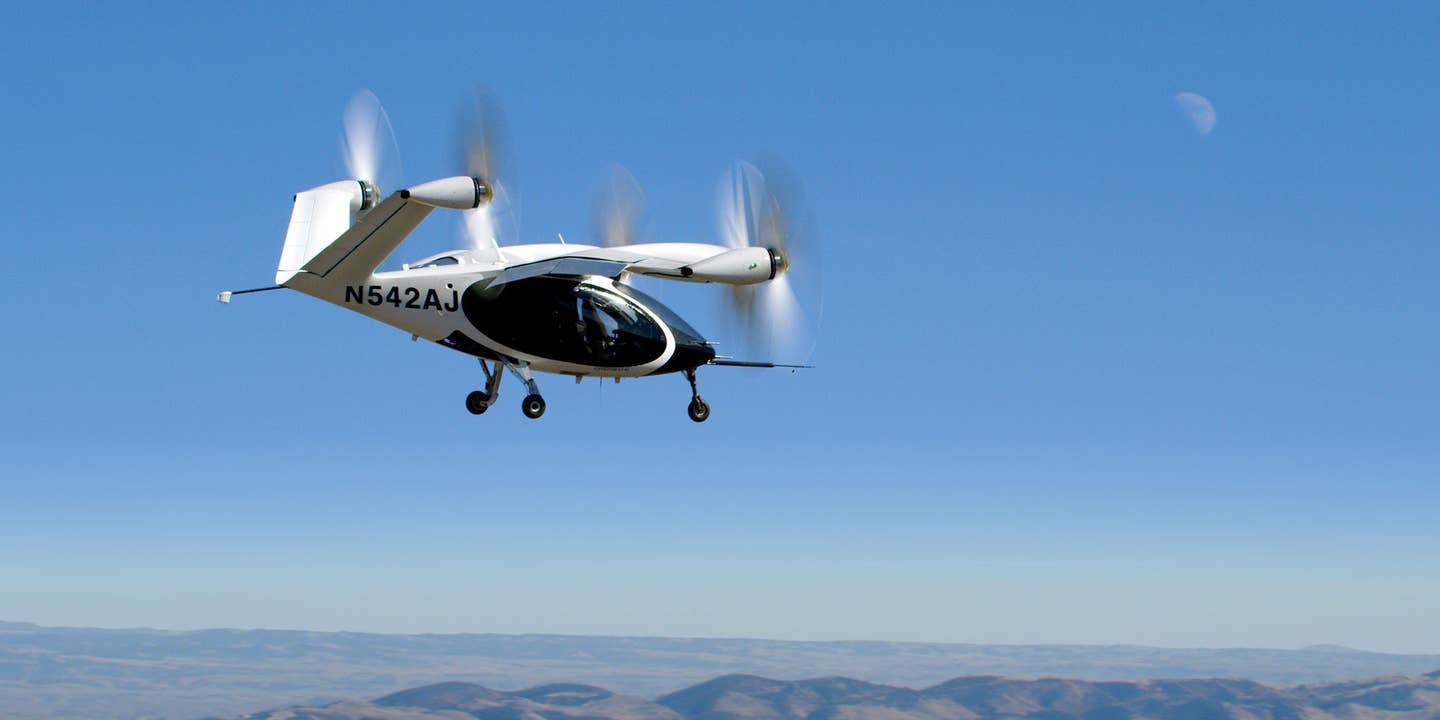Joby Aviation Reveals Details of Its New ‘Aviation Academy’
As a precursor to expanded programs, air taxi developer Joby Aviation has launched a private pilot ground school for employees and their family members.

Joby says it is “beta testing” for future flight training programs. [Credit: Joby]
As a precursor to expanded programs, air taxi developer Joby Aviation (NYSE:JOBY) has launched a private pilot ground school for employees and their family members.
The California-based company, which has been flying full-sized prototype aircraft since 2017, made the announcement on its Twitter account Monday.
“Today marks the start of classes at Joby Aviation Academy,” the tweet reads. “More than 400 Joby employees and family members signed up for our first course: Private Ground School.”
Today marks the start of classes at Joby Aviation Academy 🏫
— Joby Aviation (@jobyaviation) January 10, 2022
More than 400 Joby employees and family members signed up for our first course: Private Pilot Ground School.
We're excited to share the knowledge and joy of flight with our new students! pic.twitter.com/g4HW9lYZV2
In an email Tuesday, Joby revealed additional details behind the tweet.
“This ground school is specific to Joby employees and their families to educate them about the wonders of flight,” said a company spokesperson.
The program doesn’t offer any instruction specifically for eVTOL aircraft—only for conventional private pilot ground training.
“It is a beta test of broader programs we will launch in the future,” Joby said. "At a later date, we will offer flight school for external students interested in becoming Joby pilots.”
The announcement comes a week after another eVTOL company, Archer Aviation (NYSE:ACHR), also indicated it’s interested in employee familiarity with flying.
In a tweet posted January 5, Archer co-CEO and co-founder Brett Adcock said, “I started to better educate myself on the airspace and piloted operations. Flying [a] Cessna 172 at the Palo Alto airport.”
I started pilot training to better educate myself on the airspace and piloted operations. Flying Cessna 172 at the Palo Alto airport. pic.twitter.com/0XxIgsqtou
— Brett Adcock (@adcock_brett) January 5, 2022
Both Archer and Joby—along with other eVTOL developers—intend to operate airlines in addition to manufacturing eVTOLs. Obviously, this means they’ll need pilots—perhaps thousands of them.
According to investor materials, Joby, which is backed by Uber, envisions flying more than 300 eVTOLs in the Los Angeles market alone. A Morgan Stanley projection last year estimated Joby might produce and fly as many as 14,000 aircraft if the company reaches its full potential in a best-case scenario.
Joby Head of Government Affairs Greg Bowles suggested that a Joby “pilot academy” would help ease future challenges that might be created by pilot shortages. The Joby business model is based on the idea of tapping into an existing pool of pilots who are trained to fly conventional airplanes.
“At Joby, we had certification, pilot training, and operations in mind from the very beginning,” Bowles said.
Joby’s new classes are currently operating as an online ground school under Part 61, according to a company spokesperson. Eventually, Joby plans to offer more structured instruction under Part 141 regulations for flight training institutions and flight schools, “using a similar syllabus we developed.”
Joby’s Goal: A Part 135 Airline
Joby also intends to operate as an airline under Part 135. Bowles said the company intends to draw pilots who have reached a specific sweet spot as they build flight hours between flying for companies operating under Part 135 and Part 121.
“Our Part 135 service will require a minimum of 500-hour commercial airline pilots,” Bowles said. “The Part 121 airline environment requires an [airline transport pilot certificate], which [generally has a 1,500-hour minimum flight time requirement]. So there’s a good number of pilots between 500 and 1,500 hours that fly for traditional Part 135 operators. So that’s a great location and a lot of us folks end up doing flight instruction to build time.”
Joby is designing its production eVTOL “to be flown in today’s system with the ability to adapt to evolve into the future system,” Bowles said. “We designed our aircraft to be certified as an airplane.”
Bowles said Joby’s aircraft fits into Part 23 airworthiness standards from a size, scale, and weight perspective.
“We can glide on the wing. We can takeoff and land from runways, like a conventional airplane. We have airplane-like pilot controls and we’ve designed our aircraft to meet all the structural and performance requirements of an airplane,” Bowles said.

Sign-up for newsletters & special offers!
Get the latest FLYING stories & special offers delivered directly to your inbox






